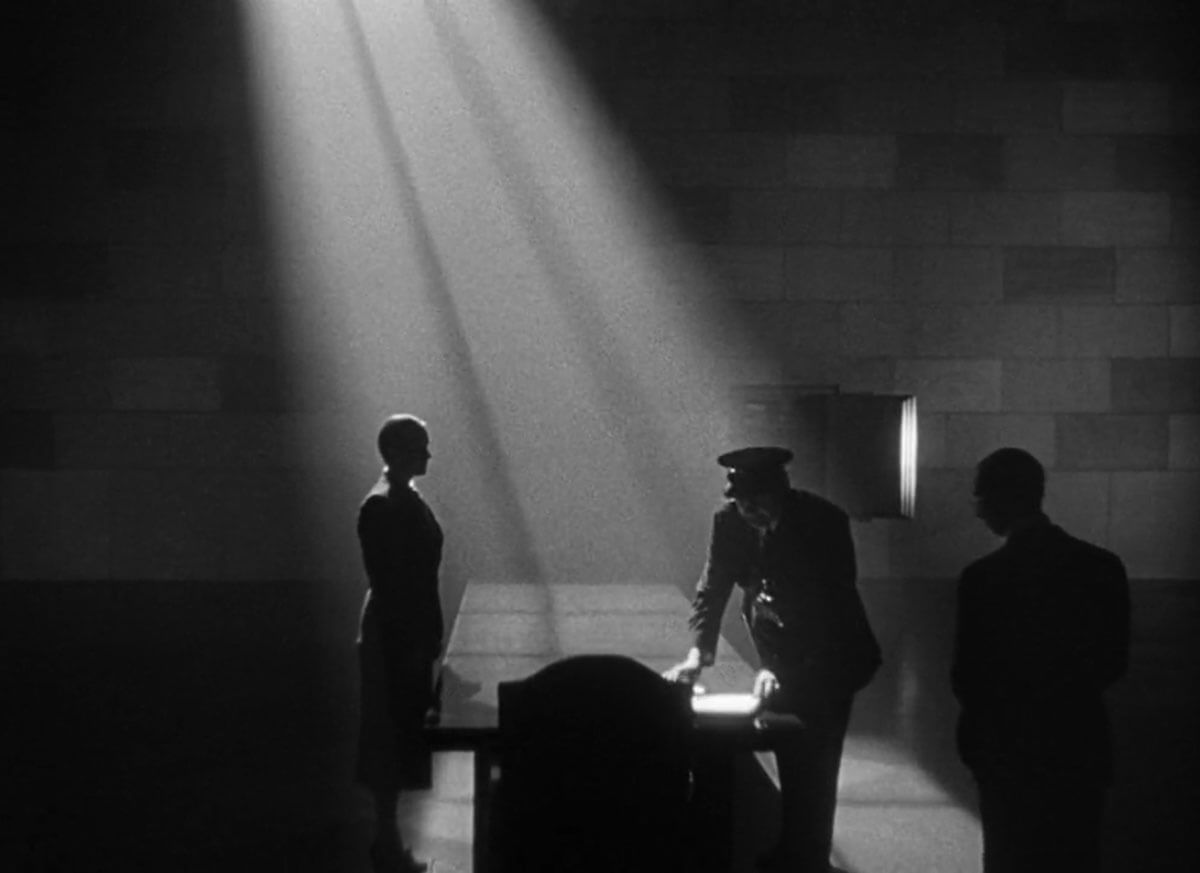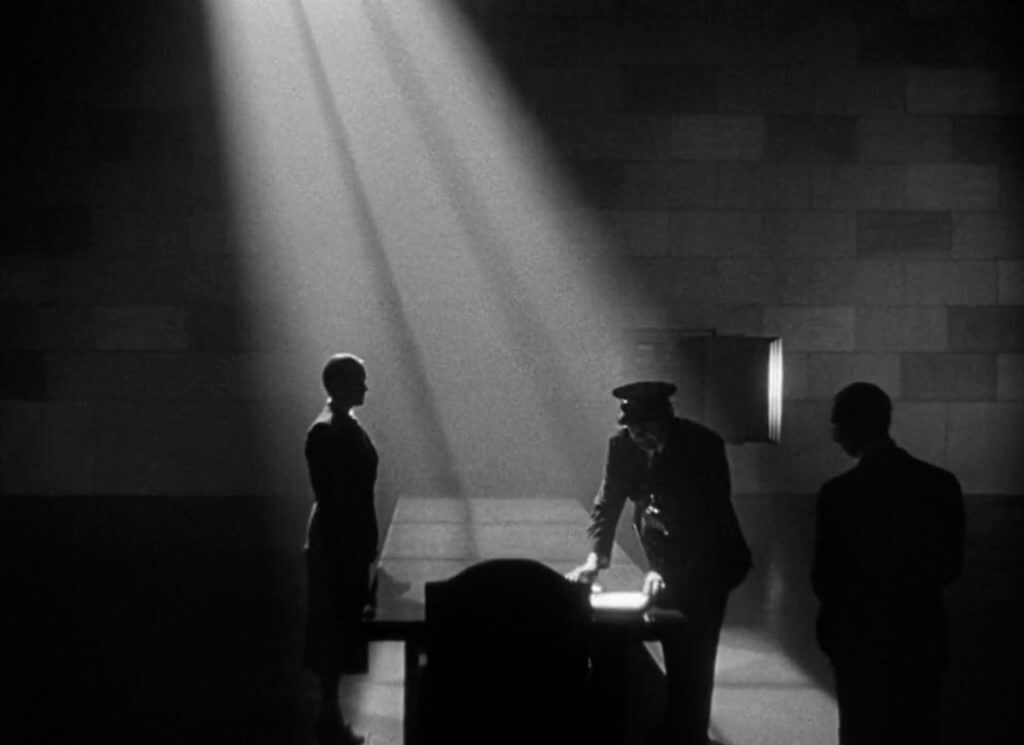Throughout the movie Citizen Kane 1941 the director Orson Welles plays with lighting to give his settings dynamic gradients and strong shadows. Of all the scenes with outstanding lighting techniques used in Citizen Kane one of the scenes that stood out most to me was Rosebud Dead or AliveBeing the third chapter in the movie we can already see how prevalent this particular component of mise-en-scene is the moment the film commences through the moment the big finishing letters The End fade on.

Make The Most Of Mood Lighting Ecg Productions
Citizen Kane is a 1941 drama film directed by Orson Welles and praised for its innovative sound and editing methods in cinematography.

. In films a big concept has always been the use of lights. The lighting has to also do the work potentially done by color palette and tone. Gregg Toland the cinematographer Welles chose for Citizen Kane had used the technique in an earlier film he had worked on The Long Voyage Home but Citizen Kane marked the first time it was used so extensively or effectively.
With this film Welles introduced many new filmmaking innovations. The Lighting of Citizen Kane. The most innovative technical aspect of Citizen Kane is the extended use of d focus eep.
Approaching the end of the film there is a scene. In my essay I will be analyzing the sequence. Citizen Kane is an excellent example of sounds but it is also connected to different techniques such as movements and cinematography technique.
MankiewiczThe picture was Welles first feature film. In Citizen Kane Orson Welles lighting decisions allowed him to convey more implicit messages about the action on screen and reveal an almost opposite. Despite this loss the audience does not view Kanes splendor lowered.
The crisp high-contrast daylight style predominates in the first half of the story after the newsreelthat is in the parts dealing. This becomes most apparent just after the. This technique added the greatest contribution to the cinematography of Citizen Kane by enhancing its plot development and the audiences perspective.
Orson Welles 1941 film Citizen Kane is considered significant for its technical innovations with its use of deep focus lenses low angles high contrast lighting long takes and dissolves. A Synthetic Approach nd. Another technique is the lengthy takes which go hand in hand with deep focus shots Citizen Kane.
In cinematography there is different types of lighting such as. Orson Welles used the photography of his 1941 film Citizen Kane to emphasize aspects of the film he wanted viewers to focus on and to remove non-essential information from the frame. Some of the innovations were in cinematography storytelling techniques and special effects lighting.
Film Techniques Citizen Kane 1941 Film scholars and historians view Citizen Kane as Welles attempt to create a new style of. From the use of this extreme backlight Welles concealed the identity of. Citizen Kane is a 1941 American drama film directed co-written produced by and starring Orson Welles.
Citizen Kane introduced Hollywood to the creative potential of other cinematic techniques as well. This was accomplished through various camera techniques including manipulation of angles and proxemic patterns. The use of lights in films helps create a meaning about what the scene is about and at times reveals a little more.
In Citizen Kane Orson Welles and Greg Toland brilliantly use techniques like lighting camera angle and scene composition to evoke emotion and feeling within the viewer. Mise-en-scene in Citizen Kane. Citizen Kane is a 1941 American drama film produced by directed by and starring Orson WellesHe also co-wrote the screenplay with Herman J.
The Use Of Light In The Film Citizen Kane. Filmmaking by studying various forms of movie making and combining them all into one. The various camera techniques used by Orson in Citizen Kane were backlight Another dramatic technique used by Welles Throughout the film was the use of extreme backlight.
For example in Citizen Kane extreme deep focus diverse camera angles including low angles that exposed set ceiling and unusual use of lighting and deep shadows all these techniques were used in the. Deep focus a stylistic technique that uses wide-angle and small lens apertures to focus simultaneously on near and far planes was used in many scenes within this film. One such innovation was a technique known.
This technique added the greatest contribution to the cinematography of Citizen Kane by enhancing its plot development and the audiences perspective. In every scene of the movie the lights are manipulated to communicate something about the given setting or characters. Citizen Kane is considered by many critics and experts to be the greatest film ever madeFor 50 consecutive years it stood at number 1 in the British Film Institutes Sight.
Thompson or any of the people associated with News. The Use Of Light In The Film Citizen Kane. For example Charles Kane was almost always under high key lighting which highlighted his significance to the plot.
Deep focus a stylistic technique that uses wide-angle and small lens apertures to focus simultaneously on near and far planes was used in many scenes within this film. Use Cameo lighting to accentuate actors and props Orson Welles used cameo lighting and other mixed lighting techniques throughout Citizen Kane as a way to direct the eye of the viewer and give emphasis to the most important elements in a scene. One aspect that was striking regarding Citizen Kane was the use of lighting to emphasize the importance of the characters.
Techniques such as single source lighting creative use of shadows montage obscure camera angles and deep focus photography make the film more enthralling visually but also contributed to the narrative and many of the themes. This was Welless first feature film. In the times when films were black and white the use of light is not easily visible.
Orson Welles used the cameo lighting technique frequently in his 1941 masterpiece Citizen Kane. In contrast almost all of the shots of Mr. Experimenting with creative storytelling techniques and non-linear plot construction the director treated the time parameter sensitively replacing time continuity of real scene by a subjective continuity controlling the rhythm and.
Throughout the film lighting sets the mood of the scene and helps the viewer distinguish between who is a good character and who is a bad character. Lighting is a crucial element of mise-en-scene in all films but especially so in black and white cinema. Some of the striking stylistic elements of Citizen Kane include its expressionistic use of lighting its dizzying variety of camera angles and movements its range of camera positions from the extreme close-up to the panoramic longshot its use of wide angle lenses and deep focus to create scenes of a three dimensional background and its inversion of the common setup shot.
Another perfect example of this technique happens in the scene after Kane lost his trial for the governorship. In cinematography there is different types of lighting such as. The Light of Citizen Kane.
The two lighting styles reappear in Citizen Kane but there they are made to serve a clear dramatic and thematic function. Three point lighting fill light key light high key and low key lighting top or under lighting and many. Three point lighting fill light key light high key and low key lighting top or under lighting and many more.

Cameo Lighting Explained What It Is And How To Use It Videomaker

6 Ways To Citizen Kane Your Film

The Lighting Of Citizen Kane Media Design And Criticism

Cameo Lighting Explained What It Is And How To Use It Videomaker

6 Ways To Citizen Kane Your Film

Make The Most Of Mood Lighting Ecg Productions

Cameo Lighting Explained What It Is And How To Use It Videomaker
Lighting In Citizen Kane Blunt Comedy Reviews By Conor Chepenik
0 comments
Post a Comment